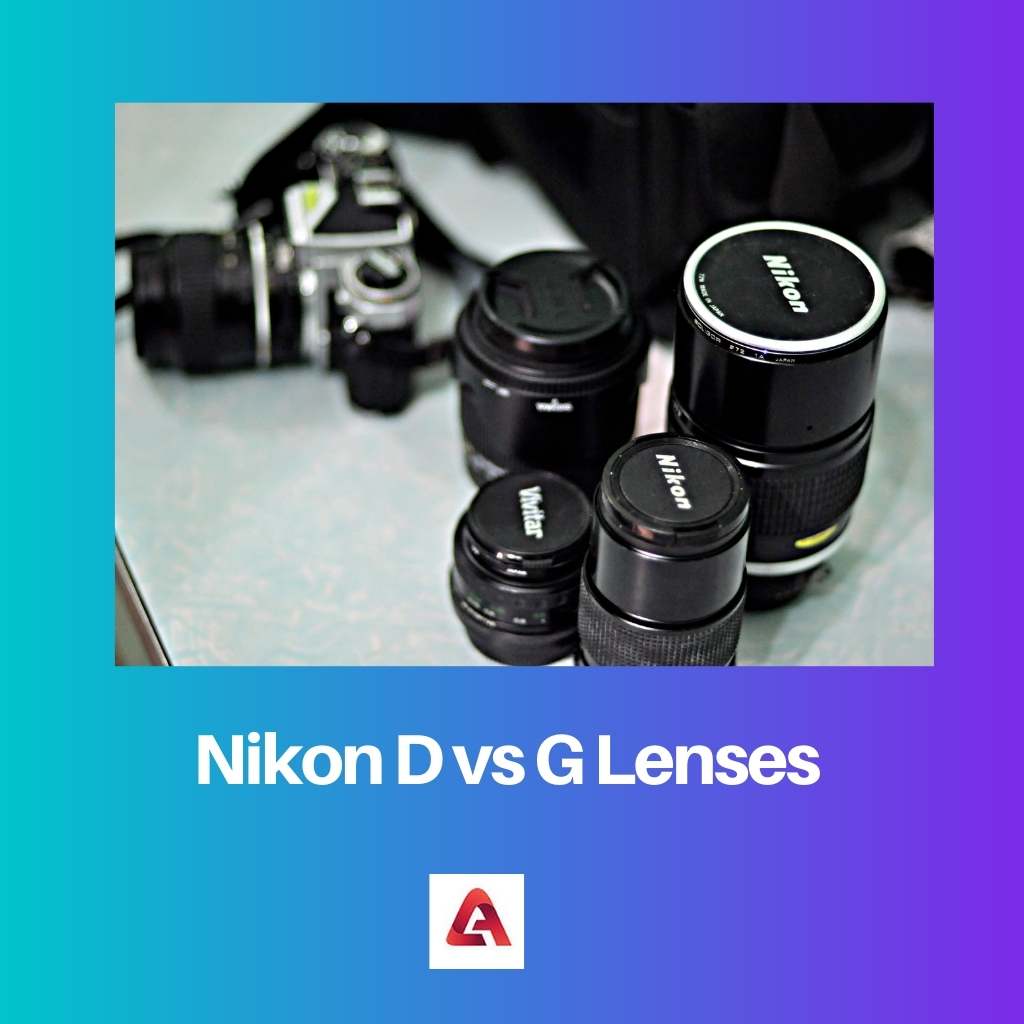Although we all have phones to capture photos yet, mobile cameras cannot compete with real camera lenses. We will look at the difference between the two types of lenses, i.e., Nikon D and G lenses.
Key Takeaways
- Nikon D lenses feature an aperture control ring, enabling manual aperture adjustments, while G lenses have electronically controlled apertures without a physical control ring.
- G lenses are lighter and more compact due to the absence of the aperture control ring, making them more convenient for modern DSLR and mirrorless cameras.
- D and G lenses are compatible with various Nikon camera bodies, but D lenses may need more functionality on entry-level models. In contrast, G lenses provide full compatibility with most Nikon cameras.
Nikon D vs G Lenses
Nikon D Lenses are the older versions of lenses from Nikon, designed with an aperture ring that makes them highly compatible with making older film cameras. Nikon G Lenses is one of the recent lenses from Nikon that is compatible with different kinds of DSLR cameras and has automatic apertures.

Nikon D lenses are older versions and therefore don’t have all the good features that are now in demand. For example, they don’t have autofocus.
G lenses are highly compatible with people’s choices. It has all the features needed to create a good snap from a camera lens: from an autofocus mode to photos with good sharpness and no distortion.
Comparison Table
| Parameters of Comparison | Nikon D Lenses | Nikon G Lenses |
|---|---|---|
| Age | These were the earliest lenses. | This is the new lens in the market. |
| Type | Created for the SLR cameras. | Created for DSLR cameras. |
| Features | Did not have all the good features. | They contain advanced features. |
| Aperture | In type D lenses aperture cannot be changed by the camera. | Changing the aperture of the camera is automatic. |
| Focus ring | They have a focus ring. | They do not have a focus ring, as it is not needed. |
What are Nikon D Lenses?
D lenses are older versions of lenses. They have an aperture ring and are very compatible with making older film cameras. Few D lenses do not have a mode of autofocus.
An example of one such lens is 300mm f (40AF-S).7. This camera has an autofocus mode even after having a D lens.
They are older and therefore cost less. The cameras having the autofocus mode with the lenses are also costlier than the normal ones without the autofocus mode.
Some of the demerits are the High sound of the motor when capturing photos or videos, which creates a nuisance if the place is silent, and the Sharpness of the image is not good when clicked with the D lenses.

What are Nikon G Lenses?
New lenses in the news are G lenses these days as they are highly compatible with people’s choices. It has all the features needed to create a good snap from a camera lens.
Photography lovers, or we can say that die heart photographers, better understand what good thing they have got after spending a few more dollars from an autofocus mode to photos with good sharpness and no distortion.
These are the three top qualities of lenses, and with them comes the long list of advanced features of G lenses. The motor in it, which helps in autofocusing, is quite cool as it does not make any sound production.
Some of the disadvantages which can be counted are as follows
1. They are bigger than D lenses.
2. This is a bit heavy.
3. There are no control rings for the aperture.
Ignoring some of the cons, we can probably say that G lenses are far better than D lenses and are a choice for camera lovers these days.

Main Differences Between Nikon D and G Lenses
- D lenses are not as sharp as G lenses.
- In D lenses, the focus motor is quite noisy, whereas in G lenses, there are no such sounds.
- https://www.sciencedirect.com/science/article/pii/S088633501101515X
- https://www.sciencedirect.com/science/article/pii/S0886335006001131
Last Updated : 11 June, 2023

Sandeep Bhandari holds a Bachelor of Engineering in Computers from Thapar University (2006). He has 20 years of experience in the technology field. He has a keen interest in various technical fields, including database systems, computer networks, and programming. You can read more about him on his bio page.

I found the post to be enlightening and found it helpful in assisting me to make an informed decision about the lenses I need for my camera.
The post is quite thorough in its analysis of Nikon D and G lenses. A very valuable resource for photography enthusiasts.
Absolutely. It is a must-read for anyone interested in purchasing lenses for their Nikon cameras.
This article takes an in-depth look at the features and functionalities of both Nikon D and G Lenses. It is very educational.
Yes, it has undoubtedly enhanced my understanding of camera lenses.
The article provides a lucid explanation about the comparison between Nikon D and G lenses. It is a commendable read.
Very informative. I appreciate the detailed comparison.
I agree. It is beneficial for those looking to invest in lenses for their cameras.
An excellent analysis. This will serve as a valuable reference for photography enthusiasts and professionals alike.
The post does a great job of explaining the technological differences between two types of lenses and helps in understanding the implications of these differences. Phenomenal work.
The post meticulously outlines the features and pros/cons of Nikon D and G lenses, providing a clear understanding for readers.
Couldn’t agree more. It’s great to have such comprehensive information available at our fingertips.
Informative read – the detailed comparison is very insightful.